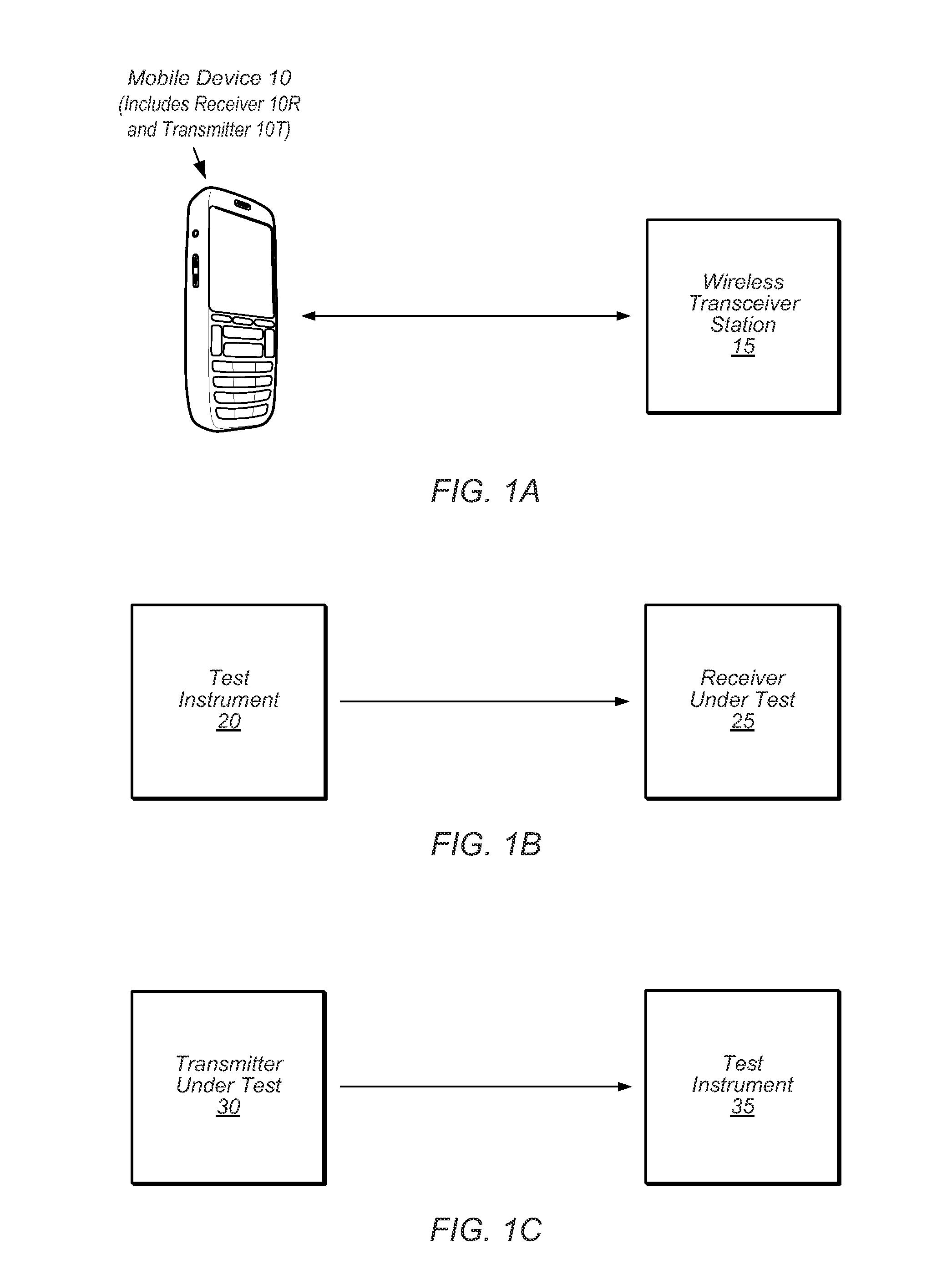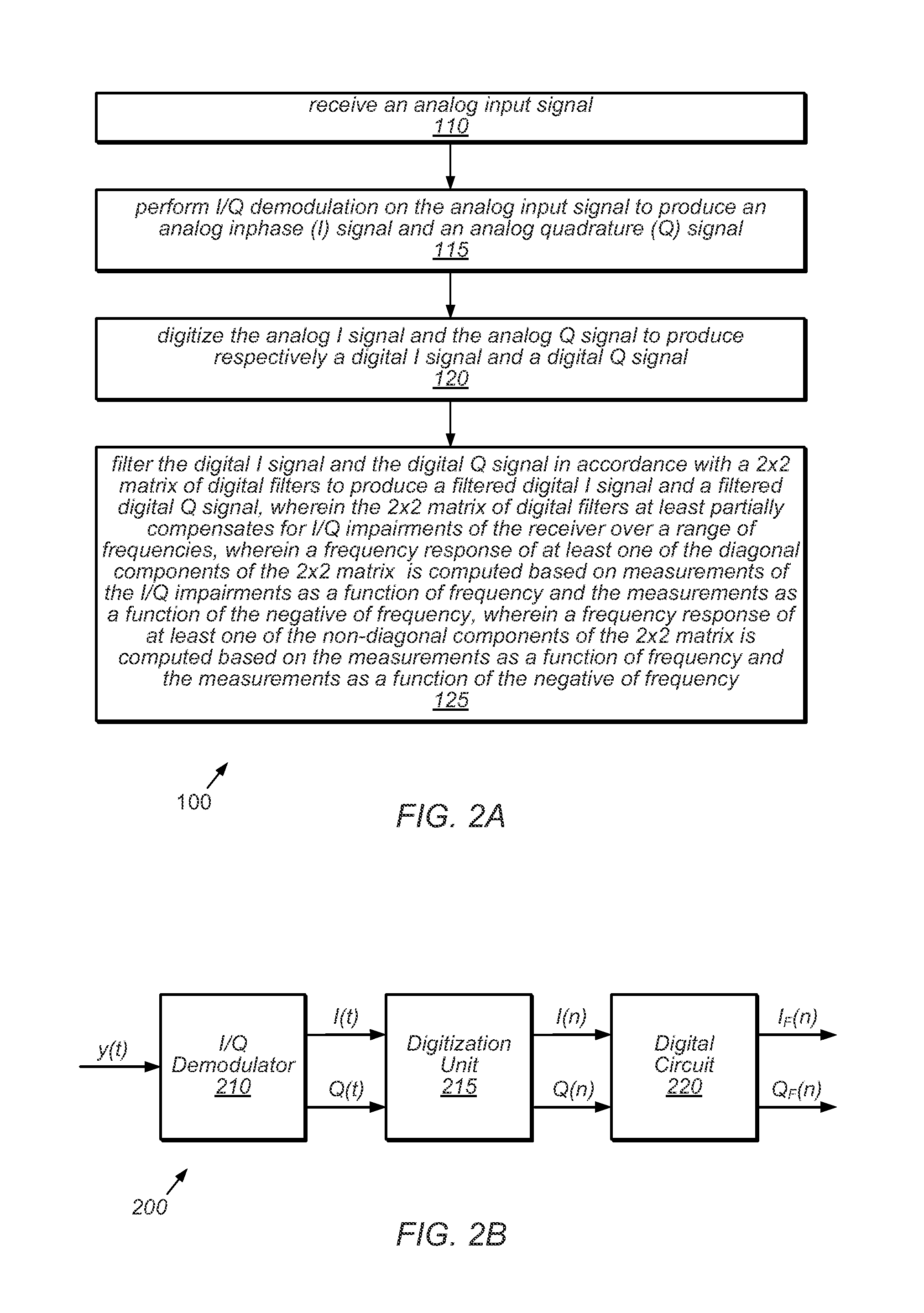Measurement of transmitter impairments using offset local oscillators
a local oscillator and transmitter technology, applied in the field of signal processing, can solve problems such as potential skew on the constellation diagram or an artificial noise floor, different phase displacements different gains of i channel and q channel,
- Summary
- Abstract
- Description
- Claims
- Application Information
AI Technical Summary
Benefits of technology
Problems solved by technology
Method used
Image
Examples
case 1
[0331] Odd Phase Skew
[0332]In the case of odd phase skew, i.e., φ(f)=φ1(f)=−φ2(f) for f>0, equations (1.20) through (1.23) specialize to:
A(f)=0 (1.24)
EB(f)={g2(f)−g1(f)} / {g1(f)+g2(f)} (1.25)
C(f)=2 cos(φ(f)) / {g1(f)+g2(f)} (1.26)
ED(f)=2 sin(φ(f)) / {g1(f)+g2(f)}. (1.27)
case 2
[0333] Even Gain Imbalance
[0334]In the case of even gain imbalance, i.e., g(f)=g1(f)=g2(f) for f>0, equations (1.20) through (1.23) specialize to:
[0335]A(f)=-sin(φ1(f)+φ2(f))1+cos(φ1(f)+φ2(f))(1.28)EB(f)=0(1.29)C(f)=cos(φ1(f))+cos(φ2(f))g(f){1+cos(φ1(f)+φ2(f))}(1.30)ED(f)=sin(φ1(f))-sin(φ2(f))g(f){1+cos(φ1(f)+φ2(f))}.(1.31)
case 3
[0336] Odd Phase Skew and Even Gain Imbalance
[0337]In the case of odd phase skew and even gain imbalance, equations (1.20) through (1.23) specialize to:
A(f)=0 (1.32)
EB(f)=0 (1.33)
C(f)=cos(φ(f)) / g(f) (1.34)
ED(f)=sin(φ(f)) / g(f). (1.35)
PUM
 Login to View More
Login to View More Abstract
Description
Claims
Application Information
 Login to View More
Login to View More - R&D
- Intellectual Property
- Life Sciences
- Materials
- Tech Scout
- Unparalleled Data Quality
- Higher Quality Content
- 60% Fewer Hallucinations
Browse by: Latest US Patents, China's latest patents, Technical Efficacy Thesaurus, Application Domain, Technology Topic, Popular Technical Reports.
© 2025 PatSnap. All rights reserved.Legal|Privacy policy|Modern Slavery Act Transparency Statement|Sitemap|About US| Contact US: help@patsnap.com



